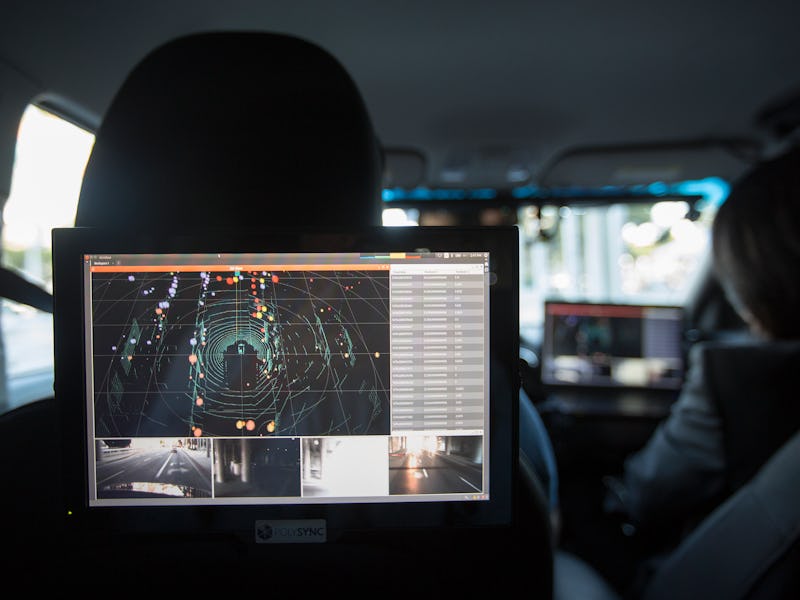It Takes 25 Seconds for Humans to Resume Control from Autonomous Cars

A new study on the amount of time it takes drivers to resume control from an autonomous system found that it could take up to 25 seconds for drivers to take the wheel.
Alexander Eriksson and Neville Stanton, engineers from the University of Southhampton, had drivers climb into a driving simulator and measured how long it took them to relinquish and reclaim control from an autonomous A.I. system. While other research has looked the transition, the researchers think this is the first study to look at how long it takes for a person to give an autonomous system control. They have also found a much wider range in reaction times than other studies on resuming control from an autonomous system, which doesn’t bode well for our autonomous future.
“Up to 25 seconds is absolutely insane,” Alexander Eriksson tells Inverse. “We kind of had our suspicions, but we didn’t think it would be that significant.”
This icon flashed on the dash while a female voice said, "please resume control."
In the stationary Jaguar XJ 350 that housed the driving simulator, 26 participants went 70 mph down 18 miles of three-lane highway with some curves and moderate traffic. At different points through the drive, the car would signal using flashing lights and a voice command that it could drive, saying “automation available” or signaling that it needed the person to drive by saying, “please resume control.”
There were two conditions, one where the person was expected to be paying attention to the road, and the other where they were asked to read a National Geographic article of their choosing when they were not actively driving.
The researchers found that it could take between 3 to 25 seconds for drivers to give control to the autonomous system. And when they were asked to take control it took between roughly two and 25 seconds if they weren’t reading, and roughly three to 21 seconds if they had been reading.
On top of the possible 25-second delay in resuming control, other research has found that it’s difficult to resume control from an autonomous system because people don’t know exactly how the car is handling. Since drivers will usually be asked to take control in situations when the autonomous system thinks things are getting too complicated, this is not great news until we have fully autonomous cars.
This icon flashed on the dash, accompanied by a female voice saying "automation available."
And since it could take up to 24 seconds for drivers to relinquish control, Eriksson floated the idea of designing platoons of linked autonomous cars on highways with that in mind. “A driver taking 15 seconds to actually engage the system and join the platoon, that needs to be designed with the interaction with that platoon,” he says. But this variation is relatively easy to handle through traffic design.
The amount of time it takes to recover control from the system isn’t quick, and since transitioning control is the next step for autonomous cars, we need to get on that.